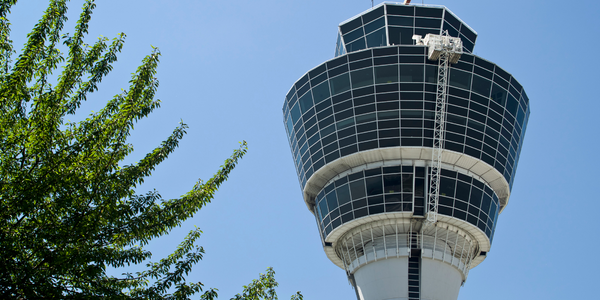The Hop Employs Demand Response Software to Increase Service Without Adding Drivers
Customer Company Size
Large Corporate
Region
- America
Country
- United States
Product
- TripSpark Demand Response Software Suite
- Ranger In-Vehicle Mobile Data Console
Tech Stack
- ITS Solution
- Paratransit Scheduling/Dispatching Software
- Real-Time Messaging System
Implementation Scale
- Enterprise-wide Deployment
Impact Metrics
- Productivity Improvements
- Cost Savings
- Customer Satisfaction
Technology Category
- Functional Applications - Fleet Management Systems (FMS)
- Analytics & Modeling - Real Time Analytics
- Functional Applications - Remote Monitoring & Control Systems
Applicable Industries
- Transportation
- Cities & Municipalities
Applicable Functions
- Logistics & Transportation
- Business Operation
Use Cases
- Fleet Management
- Predictive Maintenance
- Remote Asset Management
Services
- System Integration
- Software Design & Engineering Services
About The Customer
The Hop is operated by Hill Country Transit District. It began operation in the 1960s to provide both fixed route public transit as well as ADA complementary paratransit service for citizens and visitors of the Central Texas area. Their mandate then, as it is now, is to provide mobility and quality of life, leading to a stimulation of economic development. Over the past 50 years, the Hop has grown to serve a nine-county area covering over 9,000 square miles. With so much territory to cover and the increase in ridership demands for their paratransit service, the Hop has scheduling needs that require constant supervision and attention. Attention to detail is very important to their planners and especially to their Technical Manager, Luis Pino, who became instrumental in the deployment of an ITS solution in 2008.
The Challenge
When the Hop began operation in the 60s, and onward through the 90s, they were still entering information in Excel spreadsheets. Information regarding trips (i.e.: locations, addresses, pick up times, number of miles traveled, etc.) was entered manually on clip boards. A driver’s location was determined over the radio. The whole operation was time-consuming, error-prone and generally inefficient. Service was undependable at times, leading to complaints, which in turn was also slow when it came to complaint resolution. As ridership demands increased, they desperately needed a solution to help them increase the number of trips. However, because operational costs are a priority as well, they also needed to minimize the amount of drivers they hired. Integrating the Hop’s paratransit service with its fixed route service was also a priority that needed attention. Having the two halves working together was integral to being able to move all types of passengers, from daily commuters to those with special accessibility and mobility requirements.
The Solution
In 2008, Luis was part of the team that implemented a new ITS solution. This included a paratransit scheduling/dispatching component in the form of TripSpark’s demand response software suite. The ruggedized Ranger (in-vehicle mobile data console) was installed in vehicles, which helped to support the data collection software and communication needs of their paratransit fleet. This solution helped immediately to enable same-day scheduling, electronic manifests, and real-time messaging. The Hop can now automate data collection and driver scheduling in order to use their resources more effectively. They have been able to achieve their goal of increasing the number of runs without the budgetary stress of adding new drivers. Their employees experience faster scheduling, while their riders experience faster connections. The complaint process has also been streamlined, affording staff more time to deal with issues of greater priority. The overall result is a greater attention to detail. As Luis describes it, if “we needed to add a trip, we had to radio our drivers to see who was closest to the pickup location.” Now, the same day scheduling capability assigns the right vehicle to the right location without the need to use a radio at all.
Operational Impact
Quantitative Benefit

Case Study missing?
Start adding your own!
Register with your work email and create a new case study profile for your business.
Related Case Studies.

Case Study
Turning A Stadium Into A Smart Building
Honeywell created what it called the “intelligent system” for the National Stadium in Beijing, China, turning the venue for the opening and closing events at the 2008 Summer Olympics into a “smart building.” Designed by highly controversial artist Ai Weiwei, the “Bird’s Nest” remains one of the most impressive feats of stadium architecture in the world. The 250,000 square meter structure housed more than 100,000 athletes and spectators at a time. To accommodate such capacity, China turned to Honeywell’s EBI Integrated Building Management System to create an integrated “intelligent system” for improved building security, safety and energy efficiency.
.png)
Case Study
Smart Street Light Network (Copenhagen)
Key stakeholders are taking a comprehensive approach to rethinking smart city innovation. City leaders have collaborated through partnerships involving government, research institutions and solution providers. The Copenhagen Solutions Lab is one of the leading organizations at the forefront of this movement. By bringing together manufacturers with municipal buyers, the Copenhagen Solutions Lab has catalyzed the development and deployment of next-generation smart city innovations. Copenhagen is leveraging this unique approach to accelerate the implementation of smart city solutions. One of the primary focus areas is LED street lighting.

Case Study
Airport SCADA Systems Improve Service Levels
Modern airports are one of the busiest environments on Earth and rely on process automation equipment to ensure service operators achieve their KPIs. Increasingly airport SCADA systems are being used to control all aspects of the operation and associated facilities. This is because unplanned system downtime can cost dearly, both in terms of reduced revenues and the associated loss of customer satisfaction due to inevitable travel inconvenience and disruption.

Case Study
IoT-based Fleet Intelligence Innovation
Speed to market is precious for DRVR, a rapidly growing start-up company. With a business model dependent on reliable mobile data, managers were spending their lives trying to negotiate data roaming deals with mobile network operators in different countries. And, even then, service quality was a constant concern.

Case Study
Buoy Status Monitoring with LoRa
The Netherlands are well-known for their inland waterways, canals, sluices and of course port activities. The Dutch Ministry of Infrastructure indicates that there are thousands of buoys and fixed items in and near water environments that would profit from IoT monitoring. One of the problems with buoys for example, is that they get hit by ships and the anchor cable breaks. Without connectivity, it takes quite some time to find out that something has happened with that buoy. Not to mention the costs of renting a boat to go to the buoy to fix it. Another important issue, is that there is no real-time monitoring of the buoys at this moment. Only by physically visiting the object on the water, one gains insight in its status.



